Advertisement
An Artist Dissects The 'Savage Legacy' Of Humans At Fuller Craft Museum
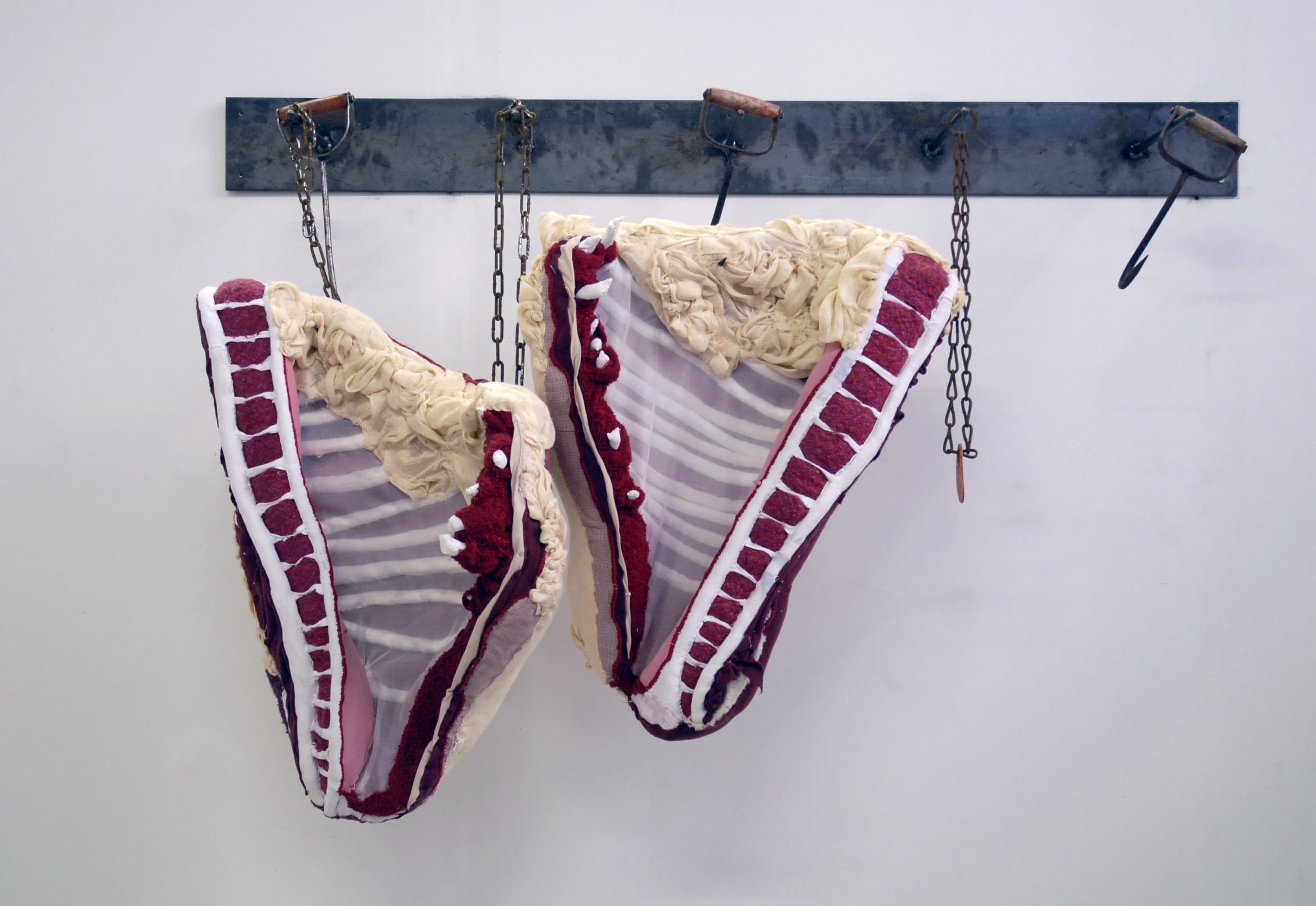
Carcasses dangle. We discern lean meat and fat, muscle, ribs and cartilage. It’s the bloody flesh we are accustomed to seeing in butcher shops, swaying casually from meat hooks, but in this case, the “meat” is not actually beef. It’s fabric, repurposed clothing, that has been fashioned into disquieting, perhaps even gruesome, sculptures of what will end up on so many dinner plates tonight.
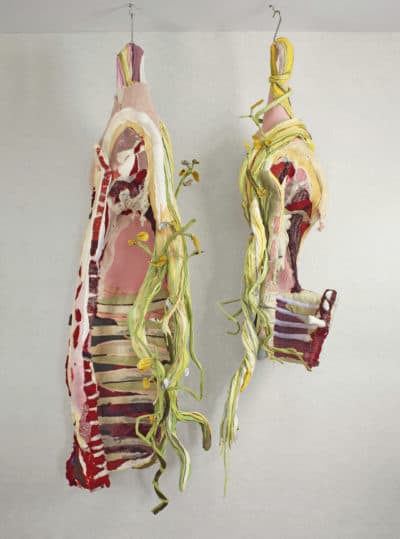
But for Argentinian artist Tamara Kostianovsky, whose work is on view in the show “Savage Legacy” at Fuller Craft Museum beginning March 13, it is about far more than just short loin, flank, sirloin and chuck. Her fabric cow carcasses, swinging pendulously from ‘S’ hooks, are a metaphor for violence that has plagued her native Argentina using the lexicon of her homeland.
“Carcasses in a meat truck in Argentina is analogous to a Budweiser truck in the United States,” says Kostianovsky. “You see them on every corner, making deliveries. So this idea of this sculptural body of a dead animal is something that is ubiquitous.”
Kostianovsky has produced a group of soft sculptures (a term she detests as there’s nothing “soft” about the work) that channel the brutality, bloodshed and wanton cruelty that surrounded her as a child. Kostianovsky grew up in Buenos Aires in the 1970s and ‘80s under a military dictatorship responsible for barbarous acts of torture and terrorism. An estimated 30,000 Argentinians — students, intellectuals, suspected left-wing activists — were “disappeared” in what was called “The Dirty War.”
Fashioned from her own clothing or the castoffs of others, she has sewn up eight cow carcasses, four bird carcasses, and created seven tree sculptures of stumps and severed limbs. (There is also a triptych featuring South American birds emerging from wallpaper based on European colonial wallpaper designs.) Taken together, the work speaks of bodies, both animal and vegetal, that have been broken, lives cut short, territories violated, thanks to someone else’s violent action. They have also been informed by Kostianovsky’s own personal history: her 81-year-old grandmother was murdered in Buenos Aires around the time that she began these sculptures.
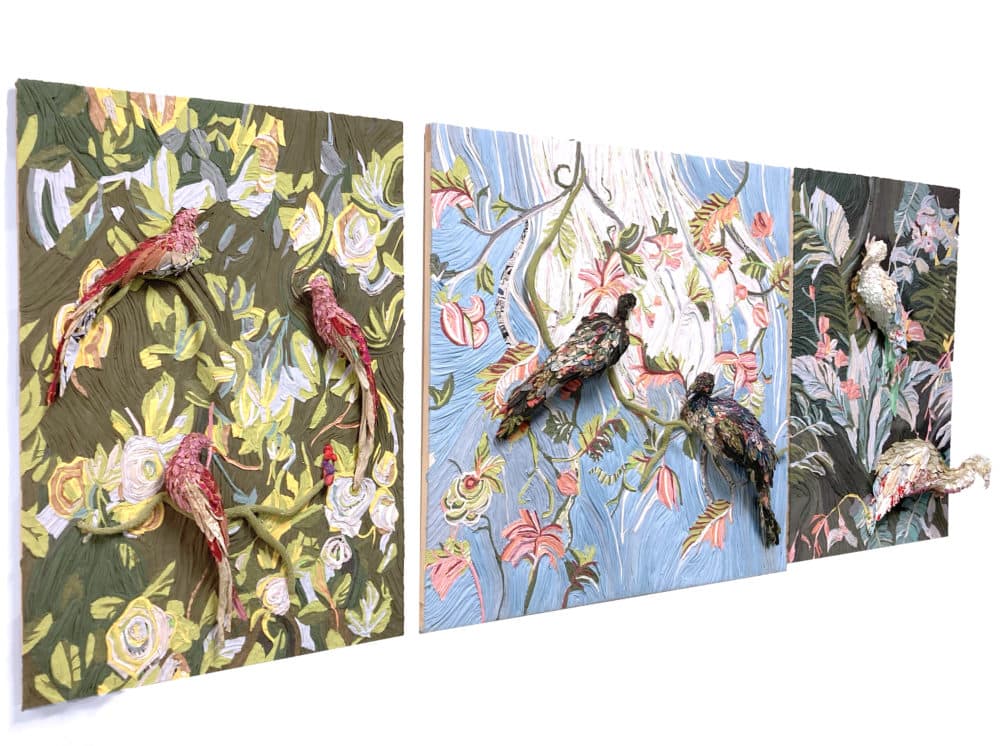
“This idea of the female body being treated kind of like a carcass, as an animal body, was something that was haunting me for a long time,” she says. “I started thinking of the sorrow of this particular case that is still very hard to bear even so many years later, but also how this is a type of recurring cycle of violence that goes around in Argentina… If you talk to a few other Argentineans, these family connections to crime and murder and really gruesome stuff is quite prevalent.”
Kostianovsky’s slaughtered animals and severed tree limbs might seem entirely dark at first glance, but her work offers possibilities for regeneration. Nested in one of the Brooklyn-based artist’s meat sculptures entitled “Big Carcass with Inner Tropical Landscape,” we see colorful South American birds perched on green vines. In another carcass, “Heal the World,” a cow cadaver morphs into emerging plant life.
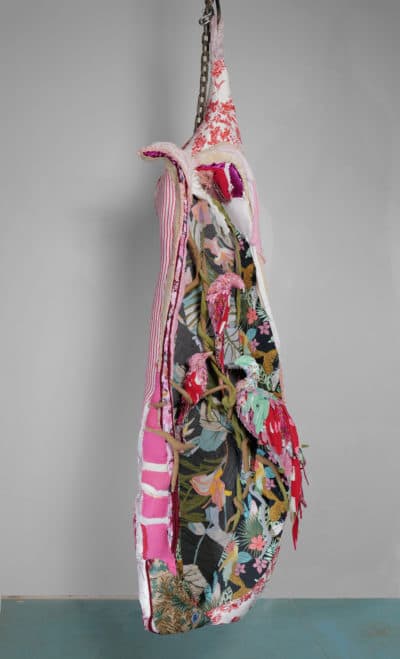
Paint was Kostianovsky’s medium when she arrived in the United States from Argentina in 2000 to pursue an MFA at the Pennsylvania Academy of Fine Arts in Philadelphia. Coinciding with her arrival, however, was the devaluation of the Argentinian peso, which meant she had less money to live on than expected.
“All of a sudden, I found myself with very little money to purchase art supplies,” she says. “But I was in school, so I started looking at my own clothing as a potential material to make art. And within the first two years of being in the United States, I had cannibalized most of my wardrobe to create these meat carcasses.”
While the work with clothing began as a necessity, Kostianovsky says it also became a commentary on something else: the rife consumerism she’s seen here in the United States. Her work also plays with stereotypical ideas of gender, combining sewing, a traditionally female endeavor, with “masculine” implements like butcher hooks.
Her bird sculptures arose after a friend suggested she think about making something else, not just cow carcasses. Intrigued, Kostianovsky ordered what she thought would be feathers from eBay but what arrived in the mail was not feathers, but a whole, freshly-killed pheasant. Making use of meat hooks in her studio, she hung the poor thing from its legs.
“That was an image that really haunted me for a long time,” she says. “I think it was the most horrible and beautiful thing I have seen in my life. You never see a bird that up close…the shimmering feathers… it was like a beautiful image. I continued making variations on this idea of the dead bird, which appeared almost like a crucified figure because of that pose, of how the wings would hang.”
The resulting sculptures are reminiscent of the lifeless, limp birds you see on sideboards in Dutch and Flemish paintings. Her tree stumps, on the other hand, were begun after the death of her father, who had been a plastic surgeon in Buenos Aires. It’s in his office that Kostianovsky witnessed surgeries that would make the squeamish blanche. Using her father’s old clothes, she sewed up trunks and tree limbs.
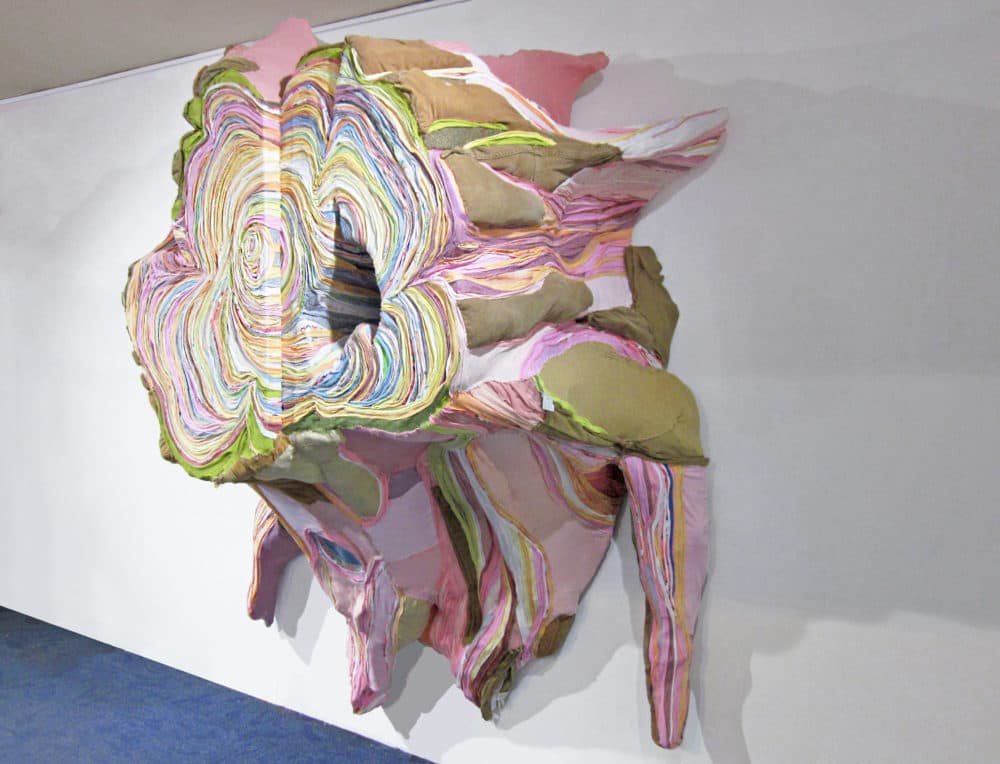
“It was sort of like a natural progression from having this obsession with the wound and the wounded body but applying it to the natural environment.”
It was also a way to memorialize her father. The tree stumps are made in soft colors — pale pink, yellow and lavender — meant to recall the fleshy tones of human anatomy. Kostianovsky’s work certainly has an unbridled dark edge, she says she has attempted to work through the gloom to something more optimistic and hopeful.
“I'm thinking of how these symbols of death can be turned into receptacles for future life,” she says. “There’s a type of transformation and an idea of regeneration coming out of these symbols.”
While visitors to “Savage Legacy” aren’t likely to crave a steak after seeing the show, they will undoubtedly reflect a little more deeply at the next meaty meal on what humans are willing to do, not just to animals, but to each other.
“Savage Legacy” is on view at Fuller Craft through Aug. 22.
